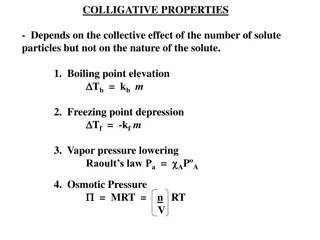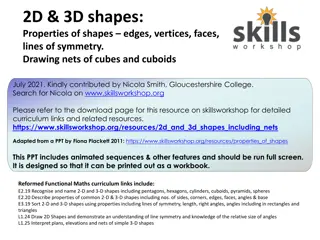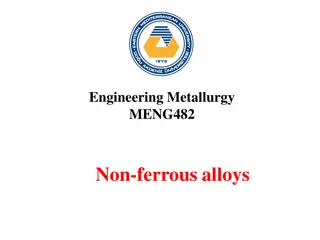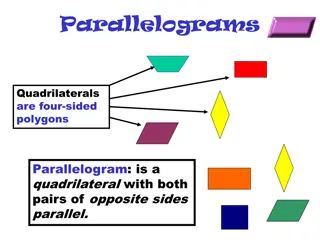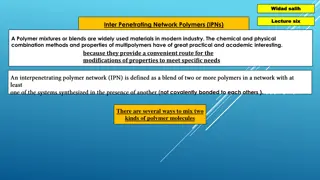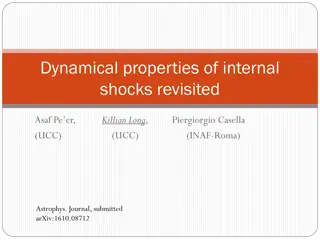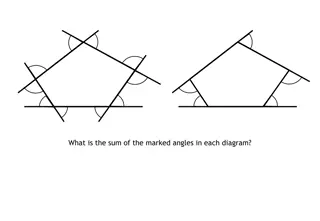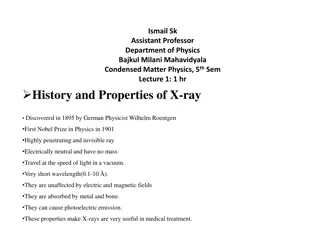Insights into Magnetars: Exploring Their Unique Properties with Insight-HXMT
Magnetars, neutron stars with intense magnetic fields, emit persistent soft X-rays and occasional bursts. The high sensitivity of Insight-HXMT allows for detailed investigation of their hard X-ray emissions, pulse profiles, and spectral properties across different energy ranges. By studying specific targets like 4U 0142+61, 1E 1841-045, and 1E 1048-5937, researchers aim to uncover timing irregularities, evolutionary trends, and burst activity in these fascinating celestial objects.
Download Presentation

Please find below an Image/Link to download the presentation.
The content on the website is provided AS IS for your information and personal use only. It may not be sold, licensed, or shared on other websites without obtaining consent from the author. Download presentation by click this link. If you encounter any issues during the download, it is possible that the publisher has removed the file from their server.
E N D
Presentation Transcript
Magnetars with Insight-HXMT Can G NG R Institute of High Energy Physics, Chinese Academy of Science
Magnetars Magnetars are neutron stars with long spin periods and large spin period derivatives. Persistent soft X-ray emission .. higher than their rotational energy output. Occasional bursts observed in X-ray and gamma-ray bands. The inferred magnetic fields of most members (26 out of 29) of this class are higher than the quantum critical limit (4.4 x 1013G). Their soft (2 10 keV) X-ray emission .. due to the decay of their high magnetic fields. From some magnetars persistent and pulsed hard X-ray (> 10 keV) emissions up to 200 keV are observed. 2
Magnetars Hard X-ray band pulse profiles -> energy dependent. Spectrum -> phase dependent. Mechanism of the hard X-ray component -> still no clear consensus. Temporal and spectral capabilities of Hard X-ray Modulation Telescope (Insight-HXMT) will allow us to investigate the evolution of pulse profiles, pulsed fractions and spectral parameters thermal and non- thermal over time and energy domain. 3
Magnetars Target List Targets: 4U 0142+61, 1E 1841-045, 1E 1048-5937, 1E 2259+586 Aim: a) To obtain timing solutions for each target and search for timing irregularities. Spin period, spin derivatives, possible glitch/anti glitch events etc. b) Investigating persistent and pulsed hard X-ray emission properties of magnetars in a wide energy range using capabilities of Insight-HXMT. c) Investigating long-term spin evolution of magnetars. d) Searching for possible burst active time intervals in Insight-HXMT data Although these sources are observed with other missions such as RXTE, INTEGRAL and NuSTAR, Insight-HXMT s sensitivity especially above 80 keV will provide more stringent results on the hard X-ray properties of the sources. 4
Magnetars Target List 4U 0142+61; One of the brightest magnetars below 10 keV. It has a spin period of 8.6 s. 2 10 keV luminosity of the source is 1.05 x 1035erg/s and 2 10 keV unabsorbed flux is 6.79 x 10-11 erg/cm2/s. The Pulse profile morphology is highly changing with energy and pulsed fraction increases from 10% at 20 keV to 100% between 80 and 100 keV. Kuiper, L. et al. 2006, ApJ, 645, 556 5
Magnetars Target List 1E 1841-045; Another bright magnetar with a spin period of 11.8 s. 2 10 keV luminosity of the source is 1.8 x1035erg/s and 2 10 keV unabsorbed flux is 2.1 x10-11erg/cm2/s. As seen in the 4U 0142+61 pulse morphology of 1E 1841-045 changes and pulsed fraction increases with energy An, H. et al. 2013, ApJ, 779, 163 6
Magnetars Target List 1E 1048-5937; Very interesting source with its bursting activity, glitches and the first anti-glitch detection in conjunction with a burst. The luminosity of the source in 2 10 keV range is 1.7 x 1034erg/s and the 2 10 keV unabsorbed flux is 1.4 x10-11 erg/cm2/s. Very weak Hard X-ray emission (Kuiper et al. 2006). Pulsations above 20.0 keV using NuSTAR observations. One of the peaks in the pulse profile shifts along energy range. As seen in the other sources pulse profile morphology and Kuiper, L. et al. 2006, ApJ, 645, 556 pulsed fraction of 1E 2259+586 change in energy. 7
Magnetars Target List 1E 1048-5937; Very interesting source with its bursting activity, glitches and the first anti-glitch detection in conjunction with a burst. The luminosity of the source in 2 10 keV range is 1.7 x 1034erg/s and the 2 10 keV unabsorbed flux is 1.4 x10-11 erg/cm2/s. Very weak Hard X-ray emission (Kuiper et al. 2006). Pulsations above 20.0 keV using NuSTAR observations. One of the peaks in the Vogel, J. et al. 2014, ApJ, 789, 75 pulse profile shifts along energy range. As seen in the other sources pulse profile morphology and pulsed fraction of 1E 2259+586 change in energy. 8
Magnetars Target List 1E 2259+586; Another bright magnetar. The luminosity of the source in 2 10 keV energy range is 4.9 x 1034erg/s and its unabsorbed flux in the same energy range is 5 x 10-12erg/cm2/s. Search for hard X- ray emission with RXTE from this source resulted in no detection. NuSTAR detected this magnetar up to 20 keV. However, their analysis showed that long exposure Yang, C. et al. 2016, ApJ, 831, 80 observations are needed for modelling this source s emission since it is weak in the hard X-ray band. 9
Observablity and FuturePlan Until November After July After September After june 10
Thanks for listening Can G NG R Dr. Institute of High Energy Physics, Chinese Academy of Sciences
























